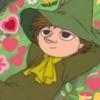One of my queens died and I looked in her test tube and there is silk on the exoskeleton of a cricket (not mold it is in strings) and am wondering if it is brood or if she spun it (I know queens don't spin silk but idk)
here is a pichttp://imgur.com/a/F6fGW
she was a solenopsis xyloni queen and if its brood tell me so I can give it to my there queen
















